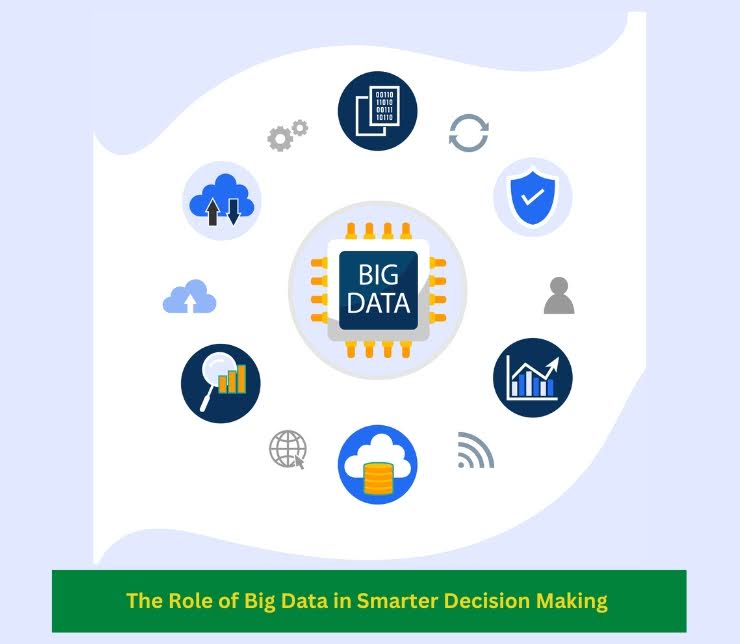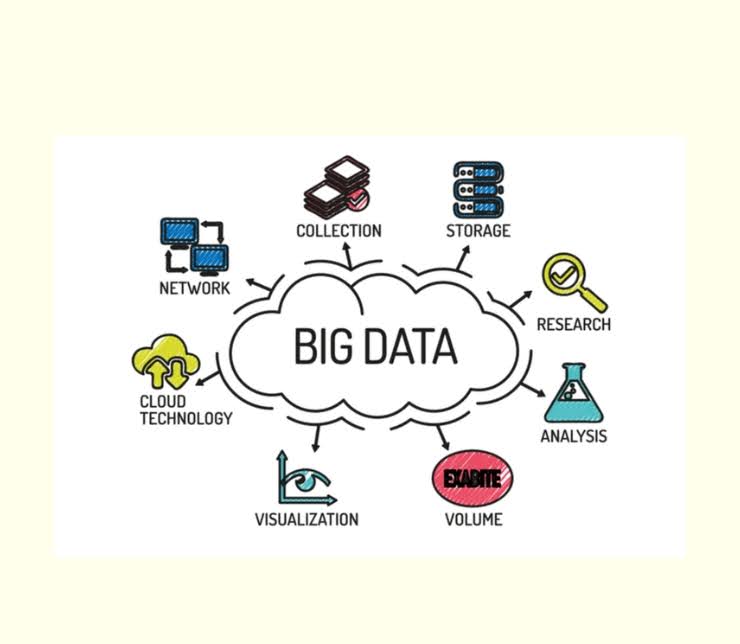The Role of Big Data in Smarter Decision Making

Introduction
In today’s fast-changing world, making smart decisions is key to success. Whether you run a small startup or lead a global company, how you make decisions affects everything. One tool that has completely changed the decision-making process is Big Data.
Big Data allows organizations to move from guessing to knowing. It provides deep insights by analyzing huge amounts of information. With this power, businesses and leaders can make choices that are more accurate, faster, and better aligned with real-world conditions.
Summary
1. What Is Big Data?

Big Data refers to large sets of data that are too complex for traditional data tools. These datasets consist of structured, semi-structured, and unstructured information gathered from a variety of sources. These could be social media posts, emails, videos, transaction records, or even sensor data.
The three main features of Big Data are:
- Volume: The amount of data is massive.
- Velocity: Data is created and processed quickly.
- Variety: It appears in various formats and originates from numerous sources.
With the right tools, companies can collect, process, and analyze this data to support smarter decisions.
2. Why Big Data Matters in Decision Making

Gone are the days when decisions were based only on gut feeling or past experience. In the current landscape, leaders use data-based insights to inform their decisions and strategic direction. Big Data helps them understand patterns, predict trends, and avoid risks.
For example, a retailer can use Big Data to analyze customer buying behavior. This helps in planning inventory, pricing, and promotions. By looking at real-time data, businesses can make decisions quickly and stay ahead of the competition.
3. Major Advantages of Using Big Data for Better Decision Making

Big Data improves decision making in many ways. Below are some of the main benefits:
Faster Decisions
Real-time data allows businesses to act immediately. For instance, if sales drop suddenly, a company can respond quickly with a new offer or strategy.
Better Accuracy
With access to large volumes of information, decisions are more likely to be correct. This reduces costly mistakes and increases confidence in actions taken.
Predictive Power
Big Data enables forecasting future outcomes. By using historical and current data, companies can predict what might happen and plan accordingly.
These benefits make Big Data an important part of any smart decision-making process.
4. Real-Life Examples of Big Data in Action

Numerous sectors leverage Big Data to enhance the quality of their decision-making processes. Here are a few real-world examples:
Healthcare
Hospitals use Big Data to improve patient care. By analyzing patient records, symptoms, and treatment outcomes, they can make faster and better decisions.
Finance
Banks use Big Data to detect fraud and assess credit risk. They analyze customer data, transaction history, and even social media activity to make secure and smart choices.
Retail
E-commerce platforms like Amazon use Big Data to suggest products based on user behavior.
These examples show how Big Data is making a big difference across many fields.
5. Tools and Technologies That Support Big Data

Several tools help organizations handle Big Data. These tools collect, process, and analyze data in different ways. Some popular tools include:
Hadoop
It is an open-source framework designed to store and handle vast amounts of data, including both structured and unstructured formats.
Spark
It processes data much faster than Hadoop and is used for real-time analysis.
Tableau and Power BI
These tools create visual dashboards from data, making it easier to understand trends and insights.
By using these tools, even complex data becomes easier to understand and apply to smart decisions.
6. Challenges of Using Big Data in Decision Making

While Big Data is powerful, it also comes with some challenges.
Data Privacy and Security
Managing extensive personal data collections brings up concerns related to privacy. Organizations must protect user data and follow data protection laws.
Data Quality
Not all data is useful. Inaccurate or low-quality data can result in misleading outcomes or faulty conclusions. Businesses must ensure that their data is clean and reliable.
High Costs
Setting up Big Data systems can be expensive. It involves hardware, software, and skilled staff. Small businesses may find this hard to afford.
7. The Future of Big Data in Smart Decisions

Big Data is expected to have an even greater impact in the future. As artificial intelligence (AI) and machine learning (ML) grow, they will work closely with Big Data to offer deeper insights.
With better tools and improved access to real-time data, decision making will become even faster and more accurate. Governments, schools, and even small businesses will find it easier to make informed decisions.
As more industries adopt Big Data, the gap between guesswork and smart decisions will shrink.
Frequently Asked Questions:
Q.1. What is Big Data in simple words?
A.1. Big Data means a large amount of information that is too complex for normal tools. It helps in finding trends, patterns, and insights.
Q.2. How does Big Data help in decision making?
A.2. It provides real-time and accurate insights. This helps leaders make faster and better choices with less risk.
Q.3. Is Big Data only for big companies?
A.3. No. Small and medium businesses can also use Big Data tools that fit their budget and needs.
Q.4. What are the challenges of using Big Data?
A.4. Challenges include data privacy, high costs, and managing data quality. But these can be managed with the right tools and practices.
Q.5. Which industries use Big Data most?
A.5. Healthcare, finance, retail, and marketing are top users. But many other industries are also starting to use it.
Conclusion
Big Data has become a key driver in smarter decision making. It helps businesses move from guessing to knowing by providing real-time insights, spotting trends, and predicting outcomes. With the right tools and mindset, organizations can use this data to improve customer experience, boost efficiency, and reduce risks.
While challenges like data privacy and quality remain, the benefits of using Big Data far outweigh the drawbacks. As technology advances, its role in shaping faster, more accurate, and data-driven decisions will only grow.
In a world full of information, those who make sense of the data will lead the future.
Want to learn more? Visit us at https://srutatech.com/ or give us a call at (917) 503-1133. We’re always ready to help and answer any questions you may have!

